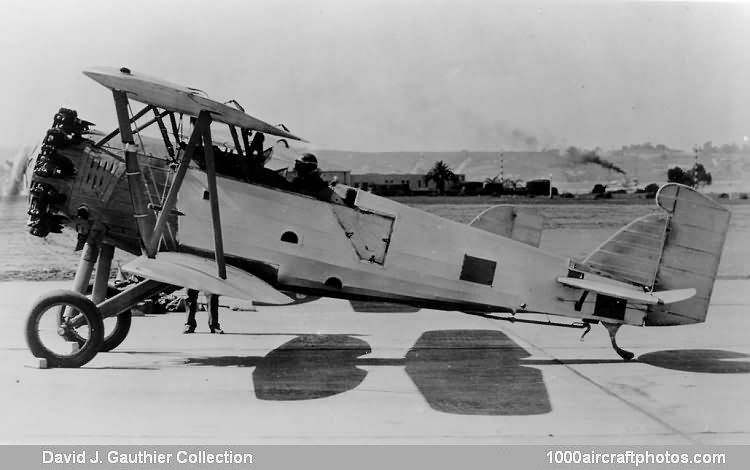DAVID J. GAUTHIER MEMORIAL COLLECTION
No. 7999. Boeing 69 F2B-1 US Navy
09/30/2014. Remarks by
Johan Visschedijk: "Thirty-two production F2B-1s (BuNos. A-7424 to A-7455 c/n 904 to 935) were ordered as a result of Navy testing of the
XF2B-1 prototype single-seat shipboard fighter, and deliveries of this somewhat heavier aeroplane began on January 30, 1928. Principal outward changes were deletion of the propeller spinner and the addition of a balanced rudder similar to that of the FB-3 and
FB-5. As an example of the reduced costs achieved by quantity production, the price of an F2B-1, less Government Furnished Equipment (GFE), was $12,650, while the XF2B-1, delievered to the Navy with all equipment, had cost $ 32,250. 1927 price for the 425 hp Pratt & Whitney R-1340 Wasp engine was $7,730. While the F2B was essentially a fighter aeroplane and carried a fighter designation, it was also used as a bomber by Navy Squadron VB-2B, which had been a fighter squadron, VF-1B.
The F2B-1, in company with other contemporary American designs, had no opportunity to demonstrate its worth in actual combat, but it did earn a unique peacetime reputation as an aerobatic aeroplane in the hands of "The Three Sea Hawks", the Navy's first precision aerobatic team, which performed at the National Air Races and other air shows. This team was able to take off, maneuver, and land with the wing tips of the three aircraft joined by 50 ft (15 m) lengths of rope festooned with cloth streamers for increased visibility from the ground. This technique was eventually expanded to the point where a whole squadron would fly and land tied together.
While the Navy F2B-1s were being built, authorization was obtained for Boeing to build two additional F2B type aeroplanes, to be known as Model 69-B, for export. Specifications and performance were identical to the production F2B-1s. One (c/n 1034) was sold to Brazil and the other (c/n 1035) to Japan."
